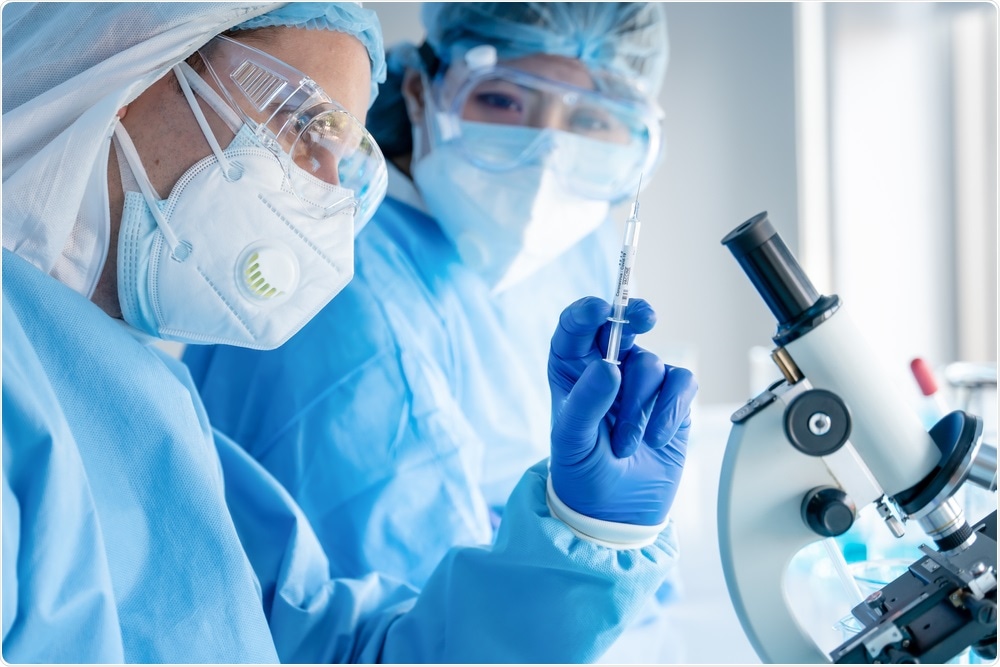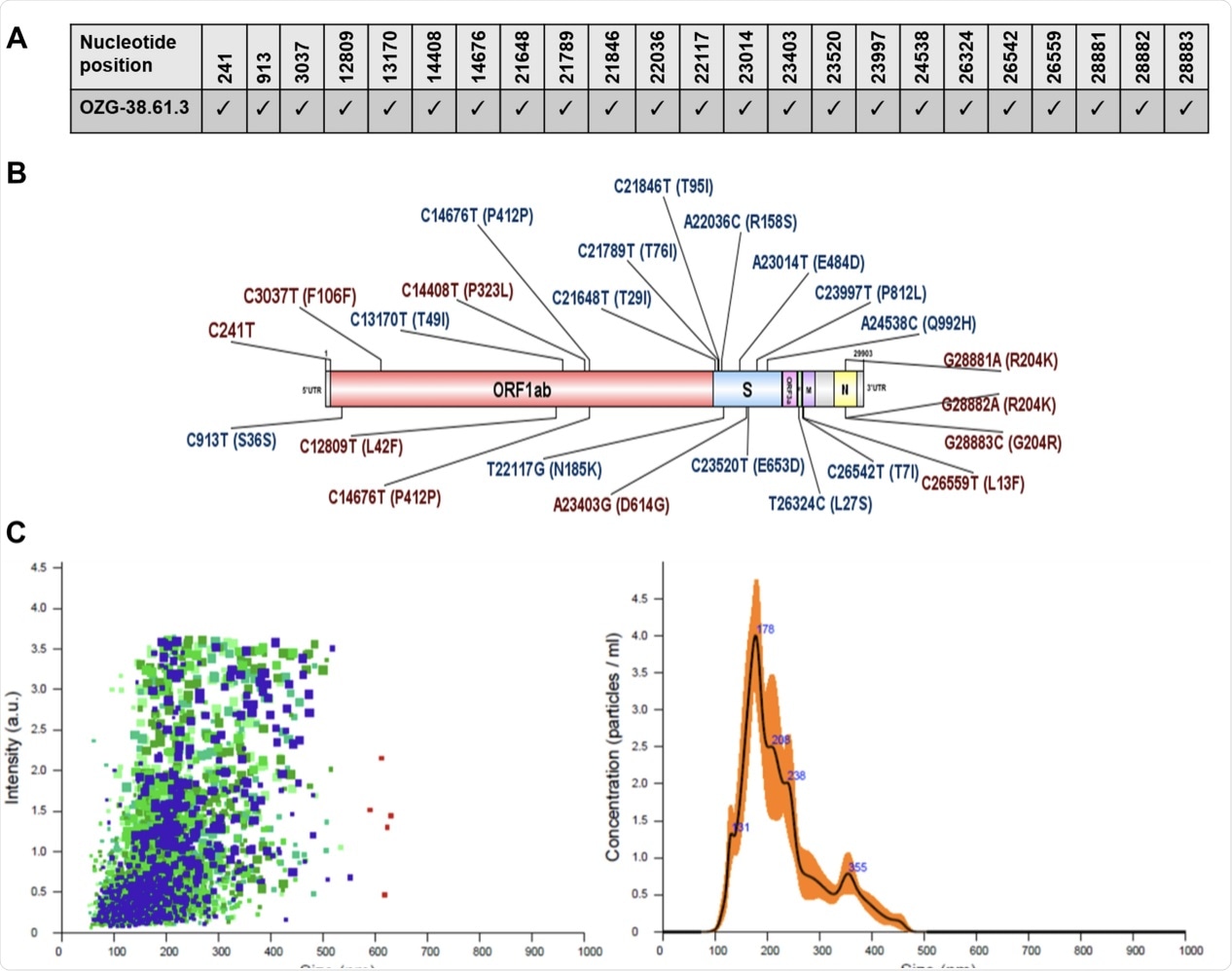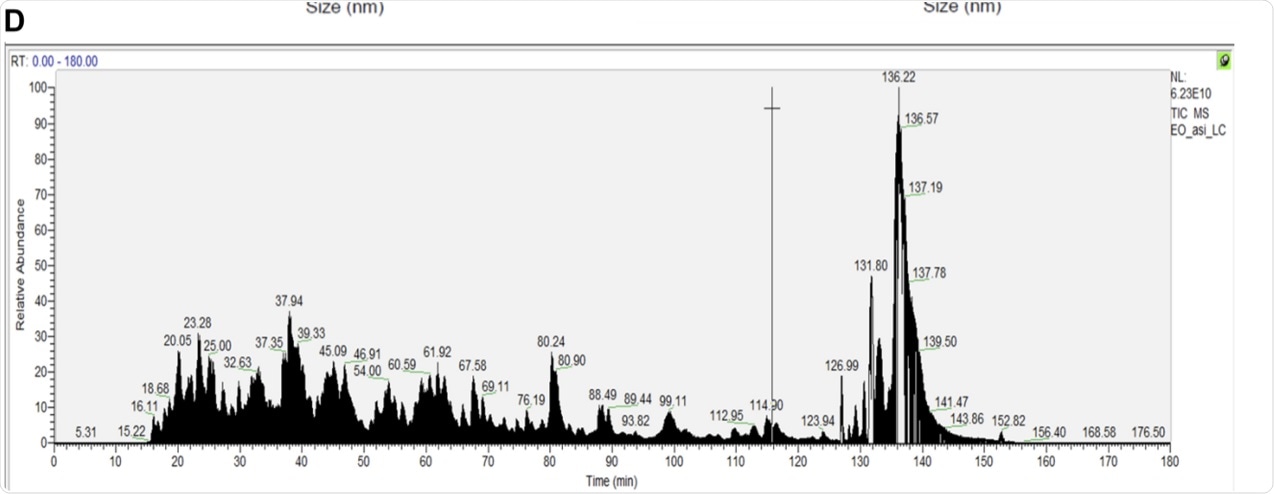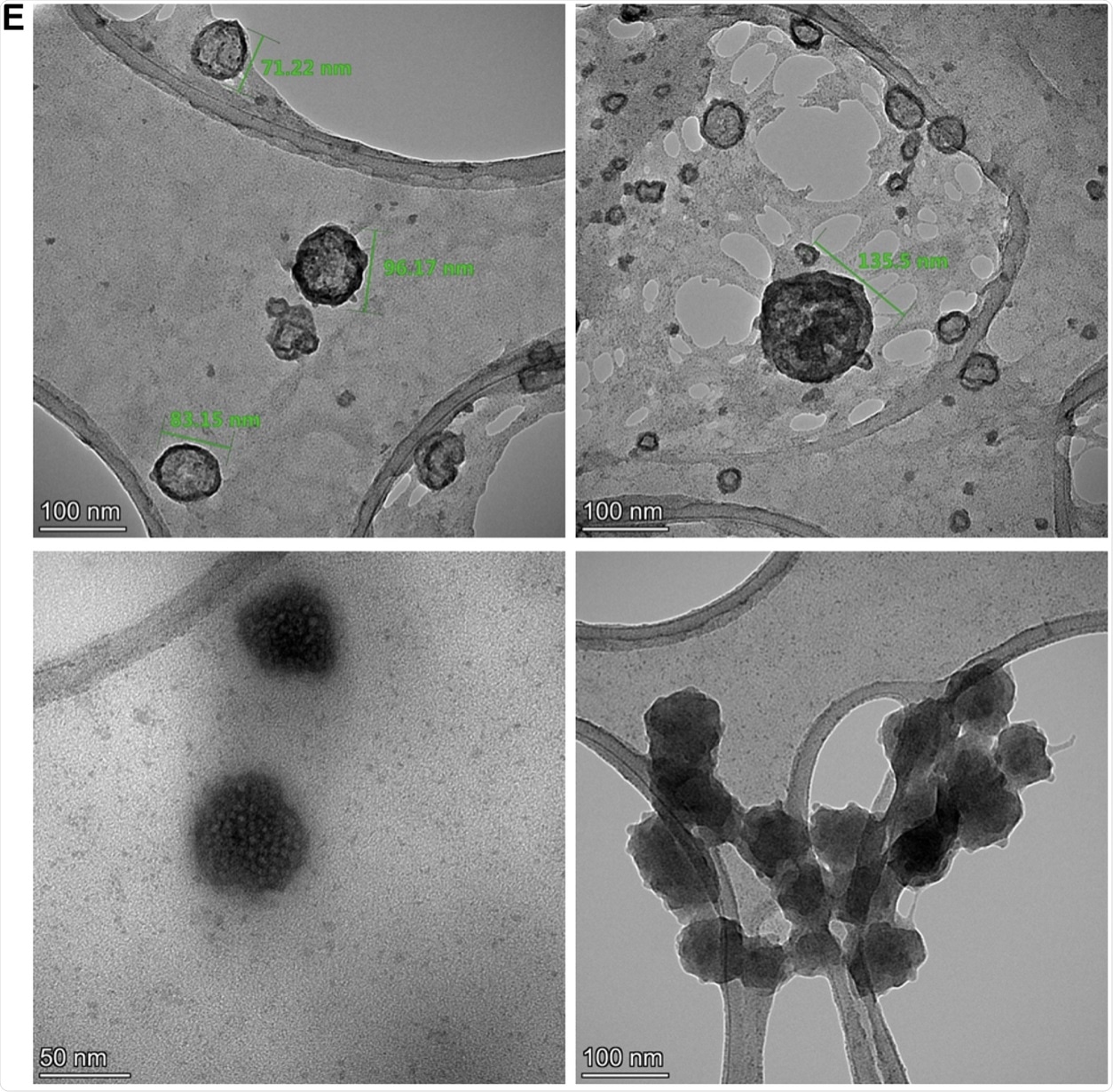A new study reports a cost-effective and more rapid method of viral inactivation in an effort to increase the appeal of inactivated viral vaccines against the ongoing coronavirus disease 2019 (COVID-19) pandemic.
The COVID-19 pandemic prompted a surge of research aimed towards making safe and effective vaccines available that are capable of preventing viral transmission and severe symptoms of the disease. Among the earliest developed COVID-19 vaccines include the messenger ribonucleic acid (mRNA) vaccines from Moderna and Pfizer-BioNTech, which encode the viral spike (S) glycoprotein within the recipient’s body. This technology is being used in viral vaccines for the first time in clinical history.
The current study reports on the efficacy of an inactivated virus vaccine that uses gamma irradiation rather than chemical inactivation of the virus. This has the advantage of avoiding the purification step, while simultaneously stimulating the immune response in a more effective manner.
 Study: Gamma-irradiated SARS-CoV-2 vaccine candidate, OZG-38.61.3, confers protection from SARS-CoV-2 challenge in human ACEII-transgenic mice. Image Credit: Mongkolchon Akesin / Shutterstock.com
Study: Gamma-irradiated SARS-CoV-2 vaccine candidate, OZG-38.61.3, confers protection from SARS-CoV-2 challenge in human ACEII-transgenic mice. Image Credit: Mongkolchon Akesin / Shutterstock.com
Background
Chemical inactivation by formaldehyde or β-propiolactone is traditionally used to render viruses harmless for vaccine production. However, the process of chemical inactivation is long and requires many additional purification steps. During the purification process, the product mass may be decreased, viral proteins may be degraded, and toxicity may occur.
In contrast, the gamma irradiation of the severe acute respiratory syndrome coronavirus 2 (SARS-CoV-2), which is the virus responsible for COVID-19, avoids unwanted toxicity while simultaneously maintaining its efficacy, as demonstrated in several animal models. By preventing viral loss, gamma irradiation also becomes a more cost-effective method of virus purification.
The inactivation of the vaccine virus was tested by allowing the vaccine to grow on cultured cells for 21 days. The virus strain, which was called OZG-38.61.3, was then used for intradermal immunization in mice to reduce the required concentration of the vaccine candidate.
The advantages of viral inactivation include the increased ease of production prior to when genomic sequencing is accomplished. In contrast to recombinant vaccines, the virus only needs to be isolated, grown too large numbers (the rate-limiting step), and inactivated. Recombinant vaccine production, conversely, requires virus identification and genome sequencing.
Study details
Individual strains were characterized and subsequently grown in successive cultures to achieve the required number. Since many variations occur during consecutive passaging, half of the unit volume of each isolate was frozen and ultimately pooled to get the final product, OZG-38.61.3.
This process proved to be an effective and safe method that yielded a mix containing most of the mutations identified so far in SARS-CoV-2. Along with the >99% homology of the OZG-38.61.3 vaccine candidate with the original virus isolate, this ensures that the inactive vaccine will remain effective in a large population.
Neither gamma irradiation nor lyophilization changed the structure of the vaccine virus; however, the aggregate formation was observed. For this reason, the researchers stabilized the product with human albumin, as this would keep viral particles from sticking to the vial walls without compromising the efficacy of the vaccine.
No viral deoxyribonucleic acid (DNA) was present in the vaccine doses. Notably, protein levels were less than 4 nanograms (ng), thus indicating efficient purification had taken place.
The researchers found that OZG-38.61.3 vaccination intradermally into mice engineered to express human angiotensin-converting enzyme 2 (hACE2) receptors for the virus, provided 3 log10 reductions in the viral load in mice immunized with 1014 viral particles, relative to unimmunized controls.


 Characterization of inactivated SARS-CoV-2 virus constituting OZG-38.61.3 vaccine candidates. (A) Mutation distribution of SARS-CoV-2 virus strain that makes up the OZG-38.61.3 vaccine candidate. (B) Representation of variants detected in the virus strain that makes up the OZG-38.61.3 vaccine candidate on the SARS-CoV-2 genome. (C) The left plot showing intensity versus the size of the particles in OZG-38.61.3. The right plot showing the means of particle size of the candidate in the sample read three times. (D) Proteome analysis of inactivated OZG-38.61.3 SARS-CoV-2 product. (E) TEM image of SARS-CoV-2 Virus. Representative electron micrographs of SARS-CoV-2. Virus particles were seen on the grid (Scale bars: 50 nm, 100 nm).
Characterization of inactivated SARS-CoV-2 virus constituting OZG-38.61.3 vaccine candidates. (A) Mutation distribution of SARS-CoV-2 virus strain that makes up the OZG-38.61.3 vaccine candidate. (B) Representation of variants detected in the virus strain that makes up the OZG-38.61.3 vaccine candidate on the SARS-CoV-2 genome. (C) The left plot showing intensity versus the size of the particles in OZG-38.61.3. The right plot showing the means of particle size of the candidate in the sample read three times. (D) Proteome analysis of inactivated OZG-38.61.3 SARS-CoV-2 product. (E) TEM image of SARS-CoV-2 Virus. Representative electron micrographs of SARS-CoV-2. Virus particles were seen on the grid (Scale bars: 50 nm, 100 nm).
The mice developed both antibody- and cell-mediated immunity against the virus, including neutralizing antibodies. No signs of toxicity were seen. Immunoglobulin G (IgG) antibodies, particularly IgG1, were increased.
The vaccine candidate was tested at two doses. Both vaccine doses produced a cellular immune response; however, only the higher dose was associated with specific neutralizing antibodies. The T-cell interferon γ (IFNγ) responses and the release of Th1 dominant cytokines also indicate vaccine efficacy.
The occurrence of skin injury during vaccination of mice may perhaps have reduced the efficacy of the procedure and skewed the findings. However, at both doses, viral copy numbers were reduced, and viral clearance was observed in some mice. X-rays of the lungs failed to show signs of COVID-19, as confirmed by histopathology.
The absence of such changes may have been due to the inadequate time of 96 hours that was given or an insufficient viral load to travel to the lungs during this period. At both doses, neutralization was observed.
What are the conclusions?
The researchers point out that the Oxford AstraZeneca, Moderna, and Pfizer vaccines are all based on new vaccine technology; therefore, all vaccines carry some inherent unknowns. In contrast, inactivated virus vaccine technology has been around for decades.
The OZG-38.61.3 virus presents viral strains that contain the frequently encountered mutations of SARS-CoV-2. When the vaccine antisera were tested against the P.1 lineage, effective neutralization was found to occur, despite the fact that this is a SARS-CoV-2 variant of concern (VoC) that resists neutralization.
“This study demonstrated that the OZG-38.61.3 vaccine candidates created with gamma-irradiated inactivated SARS-CoV-2 viruses produced neutralizing antibodies, especially effective in the 1014 viral RNA copy formulation, and this was effective in protecting transgenic human ACE2 expressing mice against the SARS-CoV-2 virus.”
- Turan, R. D., Tastan, C., Kancagi, D., et al. (2021). Gamma-irradiated SARS-CoV-2 vaccine candidate, OZG-38.61.3, confers protection from SARS-CoV-2 challenge in human ACEII-transgenic mice. Scientific Reports. doi:10.1038/s41598-021-95086-4.. https://www.nature.com/articles/s41598-021-95086-4.
Posted in: Medical Research News | Disease/Infection News | Pharmaceutical News
Tags: ACE2, Albumin, Angiotensin, Angiotensin-Converting Enzyme 2, Antibodies, Antibody, Cell, Coronavirus, Coronavirus Disease COVID-19, Cytokines, DNA, Efficacy, Electron, Enzyme, Formaldehyde, Genome, Genomic, Genomic Sequencing, Glycoprotein, Histopathology, Immune Response, immunity, Immunization, Immunoglobulin, Lungs, Lyophilization, Mouse Model, Mutation, Pandemic, Particle Size, Protein, Proteome, Research, Respiratory, Ribonucleic Acid, RNA, SARS, SARS-CoV-2, Severe Acute Respiratory, Severe Acute Respiratory Syndrome, Skin, Syndrome, T-Cell, Transgenic, Vaccine, Virus

Written by
Dr. Liji Thomas
Dr. Liji Thomas is an OB-GYN, who graduated from the Government Medical College, University of Calicut, Kerala, in 2001. Liji practiced as a full-time consultant in obstetrics/gynecology in a private hospital for a few years following her graduation. She has counseled hundreds of patients facing issues from pregnancy-related problems and infertility, and has been in charge of over 2,000 deliveries, striving always to achieve a normal delivery rather than operative.
Source: Read Full Article
